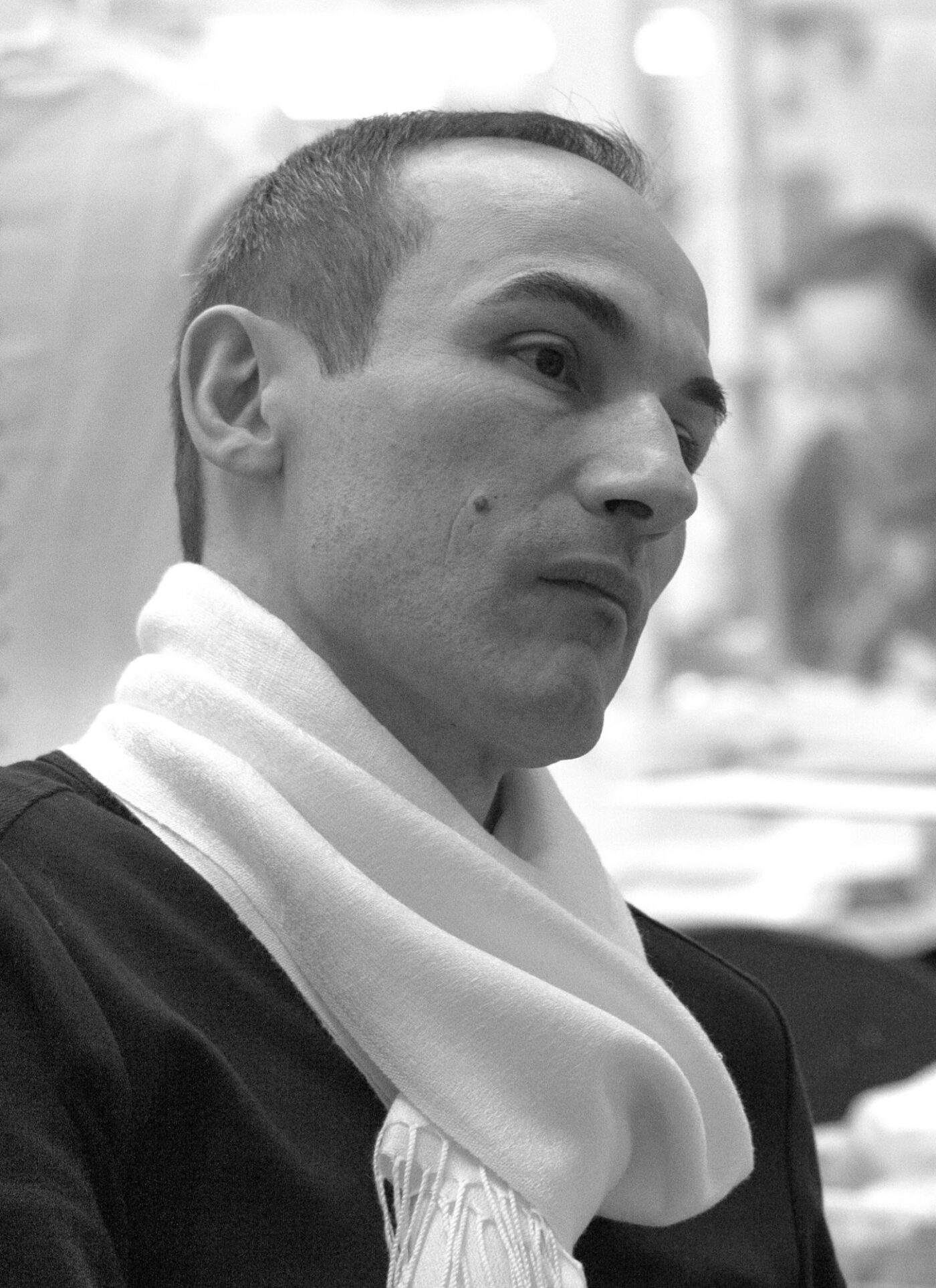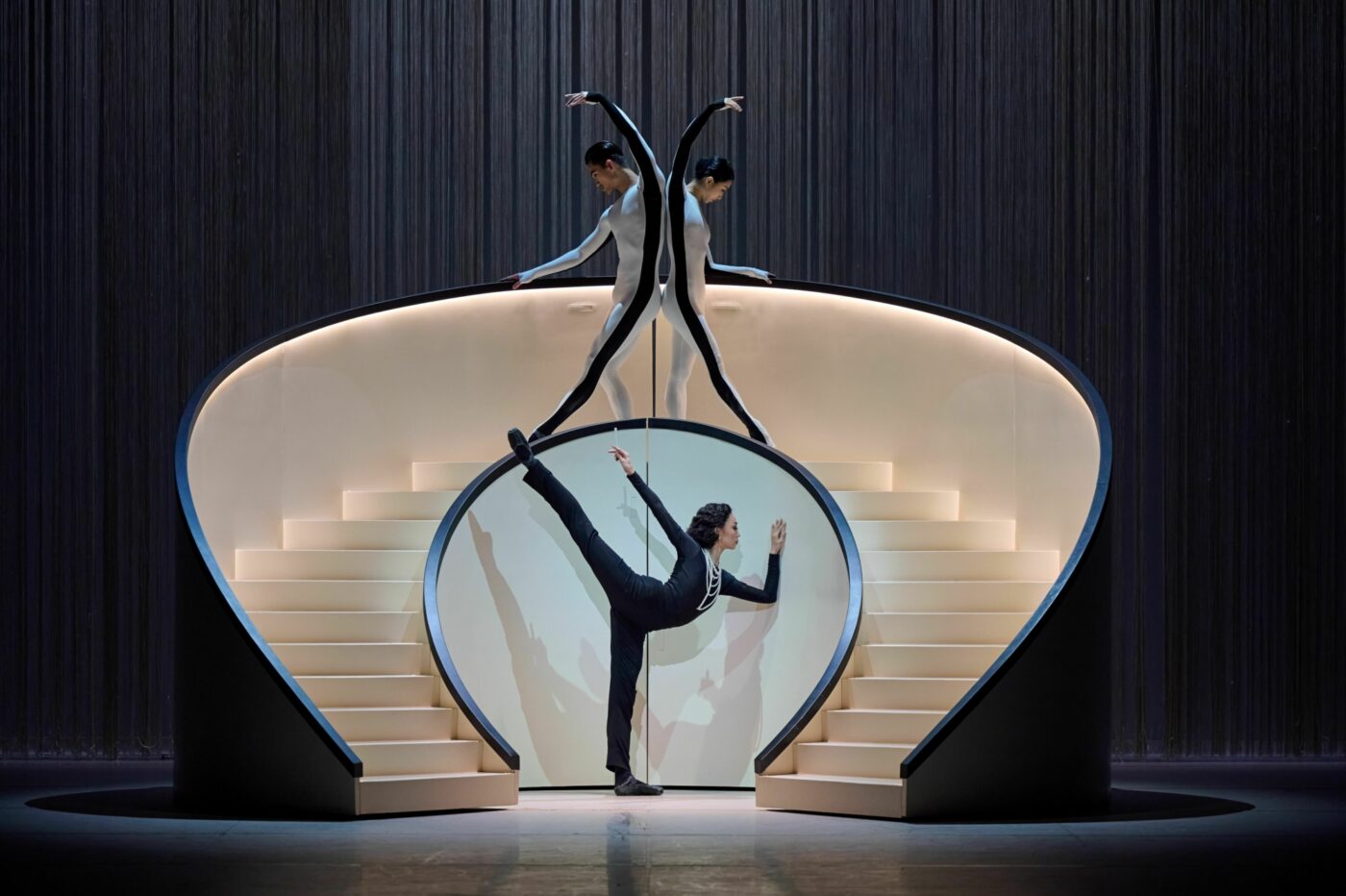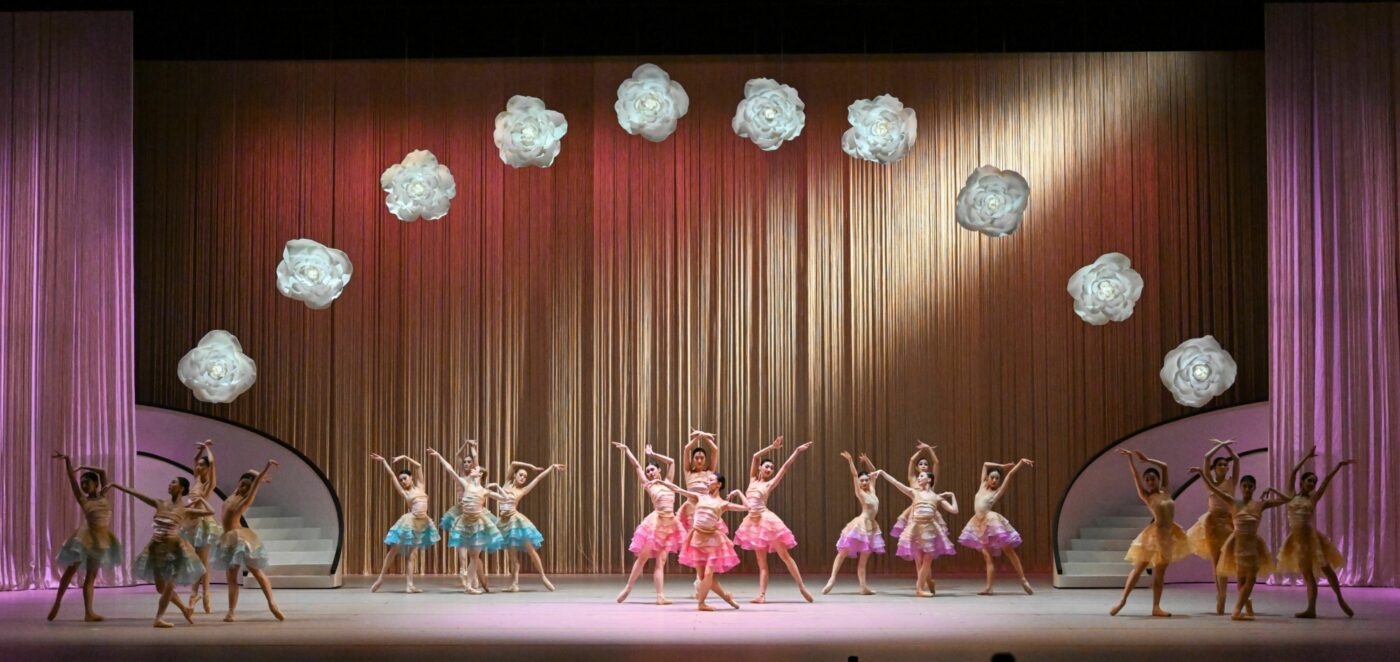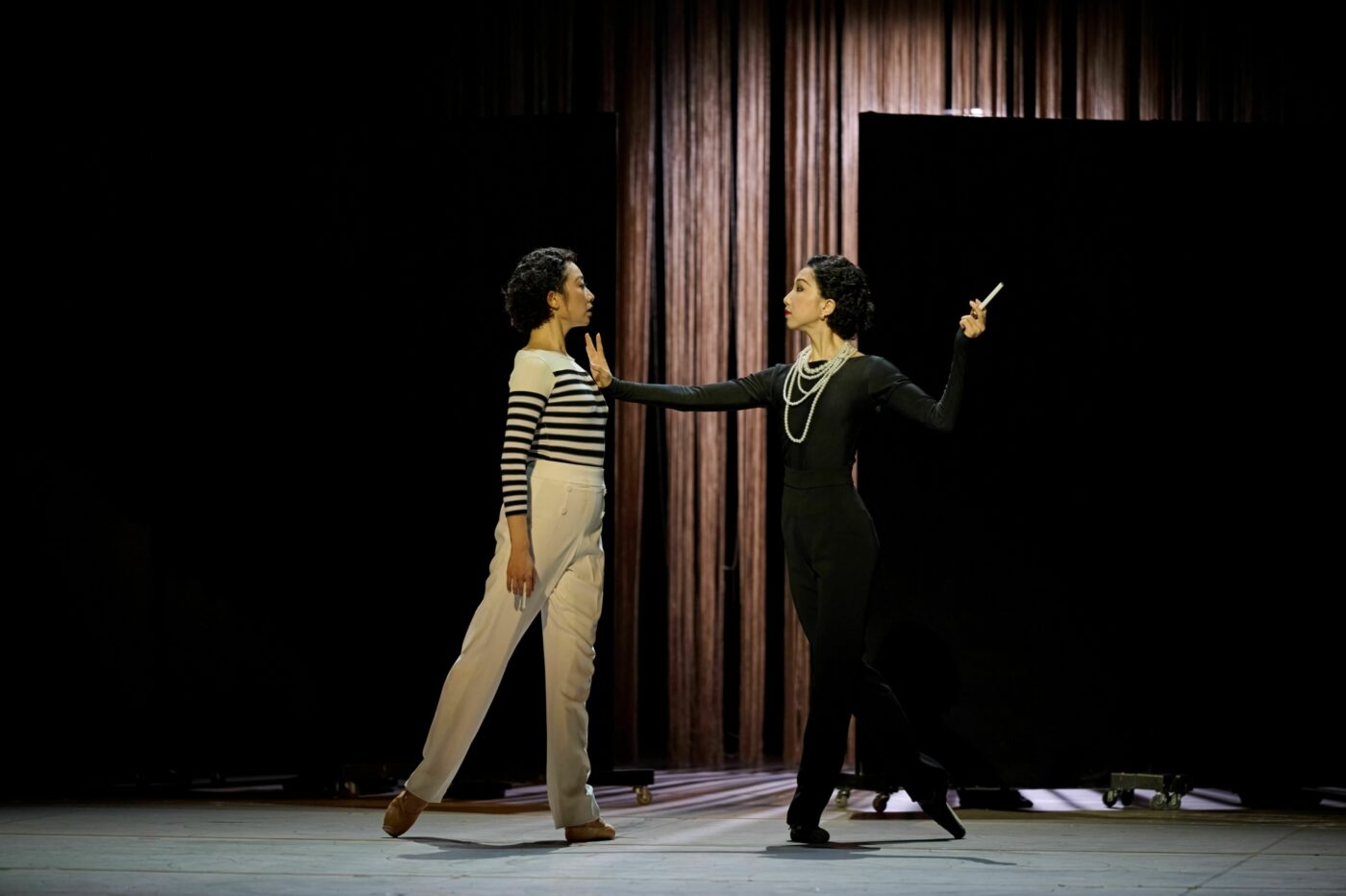Coco Chanel: Talking Fashion with Jérôme Kaplan
January 22, 2024

Known for her couture, Chanel No. 5 fragrance, and the Little Black Dress that Vogue called “the frock that all the world will wear”, Coco Chanel rose from humble beginnings as a seamstress to become one of the greatest fashion icons of the 20th century.
Atlanta Ballet talks fashion with Jérôme Kaplan, Set and Costume Designer of Coco Chanel: The Life of a Fashion Icon.
This was your first time working with choreographer Annabelle Lopez Ochoa. How did it all begin?
Work on Coco Chanel: The Life of a Fashion Icon commenced at the end of 2020. We began with different mood boards and initial sketches of sets and costumes. I proposed the idea of having an abstract space from which to tell Chanel’s story. There are so many things to say about Chanel’s life–her work, her fashion, her love affairs– that I felt it better to keep the set simple. Just like her style: simple, elegant, and minimalist.
How did you draw inspiration from Chanel’s minimalist aesthetic?
We drew inspiration for the sets from the Chanel No. 5 perfume bottle. Annabelle and I visited Chanel Retrospective at the Palais Galleria in Paris in 2020, a showcase of Chanel’s history, legacy, and fashion. There we saw the original bottle of Chanel No. 5, and its simplicity was inspiring. I was amazed at how it hadn’t really changed in over 100 years– the bottle looks almost exactly the same today. It truly is timeless. In Coco Chanel: The Life of a Fashion Icon, I wanted to create something timeless, something that will last for many years to come.
The set in the first act of the ballet is completely off-white with black lines, a nod to the white box of the famous perfume. As we follow Chanel’s story, we witness the death of her true love, Boy Capel, at the end of act one. The light suddenly transcends into darkness. In stark comparison, we created the set for the second act in black, as a backdrop to the darker times in her life.
So significant was Chanel’s minimalist designs, that even the stairs were created in off-white with a black outline, again evocating the Chanel No. 5 perfume bottle.
Tell us more about the stairs. We’ve heard that these elegant, curved staircases are used extensively in various scenes of the ballet.

Hong Kong Ballet dancers Garry Corpuz, Gao Ge and Zhang Xuening. Photo by Conrad Dy-Liacco, courtesy of Hong Kong Ballet.
For Annabelle, the staircases play an integral part theatrically. A recognizable icon of the House of Chanel, for us they also symbolize Chanel’s rise to the top, from her humble beginnings as a seamstress to the launch of a global fashion empire. I like to think the stairs suggest Chanel’s destiny, from her poverty-stricken origins to her eventual success as an iconic designer.
Using a pair of staircases enabled us to showcase Chanel’s love affairs and the comings and goings of the men in her life, from the departure of Etienne Balsan to the arrival of Boy Capel. I loved the way Annabelle choreographed so creatively and extensively with the stairs.
There are other transformative pieces in the ballet too. Simple chairs, all hanging dramatically from the ceiling, become exquisite chandeliers to showcase the home and lifestyle of the wealthy Balsan. The seamstress tables also play a big choreographic role, in the scene about Coco’s empire.
Coco Chanel: The Life of a Fashion Icon, relives fashion history through dance. How much did you reference history and what influence did it have on your costume designs?
At the Palais Galleria we saw a wonderful collection of Chanel’s fashion and designs over the years, and gathered so much inspiration for the sets and costumes. Firstly, we looked at Chanel’s style, which was very simple. Then we looked a little closer, and when you look deeply, you see that her simplicity is elegance. Chanel believed that less is more and that women shouldn’t be disguised.
Chanel’s famous black dress was the most important historically. It gave women the freedom to break free from the traditional corsets, which were very stiff, uncomfortable, and impractical. Moreover, ladies needed help to put them on, so only the rich could afford to buy the dresses of that time. Chanel, in contrast, made something very simple that any woman could wear. Her designs were about giving women freedom, especially the freedom to work. Chanel became very famous after the First World War, where women did a lot for their country and wanted to keep working. They were liberated. And Chanel was part of that revolution.
Chanel loved to wear men’s clothes. Her fashion was inspired by the men in her life: the wealthy Balsan, an ex-military officer and textile heir; and Boy Capel, a British tycoon and polo player. Few photographs existed in color at that time, so applying color to the stage costumes was challenging. I gave Boy Capel an English gentleman look, with a tweed jacket and a touch of country-style color. I wanted to create clear, distinctive color palettes for each of the main characters so they could be easily recognizable by the audience: Balsan a subdued lilac, Wertheimer (director of the Chanel No. 5 perfume company) a more outstanding red to depict his showy personality, for example.
Chanel was her own muse and tested fashion on herself first. Take her famous Breton look, with the white pants. She took inspiration from the sailors she saw in Deauville and re-created the look on herself. Chanel’s designs were not only simple and elegant, but practical. Think about her shoes; they are white with a black tip, so they never get dirty.
How did the choreography and music influence your designs?
Peter Salem’s musical score is incredibly exciting and helped dramatize the scene that portrayed the arrival of the new fashion look – the ‘Nouvelle Vague’. Chanel was upset about this silhouette with the superfluous fabric and a tight waistline. To her, this style was impractical. The music, theatre and fashion in this production were a result of wonderful artistic collaboration. I was very privileged to work with such a talented team.
There are some scenes where the choreography is quite technical, and the costumes needed to work technically as well. In the scene where Chanel and her seamstresses are dressing the famous actress Gabrielle Dorziat, they are laying a Chanel-designed dress over her current dress on stage, totally changing her silhouette. The dress change had to be quick and easy to do on stage, while also connecting to the choreography. I decided to dress Gabrielle Dorziat in Chanel’s fringe dress, which was very close to the original design on display at the Palais Galleria.
What was it like to emulate the fashion of such an iconic designer?
The last scene features a fashion show of Chanel’s designs. I created dresses using monochromatic tones of beige, off-white, gray, silver, black and dark blue. I wasn’t aware initially that there was no color in Chanel’s designs, her focus was more on the cut and style, with the prominent use of neutral tones. It has been a wonderful journey of discovery for me.

Hong Kong Ballet dancers. Photo by Tony Luk, courtesy of Hong Kong Ballet.
My assistant, Mark Zappone, was very artistic and found beautiful fabrics for the production, including for the final fashion scene, in New York. He designed the camellias, Chanel’s favorite flower that featured extensively in her designs, particularly on jewelry. We created an ‘arch of camellias’ for the backdrop of the Chanel No. 5 perfume scene, as well as a stunning camellia dress. Mark started with sketches, then a prototype of a white flower. He created four prototypes before we eventually decided on what was right for the production.
Will we see some of your own style and fashion influence on stage?
In the first act, the hat scene is choreographed to showcase the very beginning of Chanel’s design career as a milliner. The hats used in the ballet were inspired by Chanel’s hats when she owned her first shop, and we had to closely consider the best way to re-create the look in Hong Kong, where the production first premiered. Initially, I sent the hat designs to a milliner, but, having seen how important they were to the story, I decided to design and create them myself and then adjust them as needed to work with the choreography. I used a lot of different materials, including feathers, and became a milliner!
Do you have a favorite Chanel design?

Hong Kong Ballet dancers Yang Ruiqi and Gao Ge. Photo by Conrad Dy-Liacco, courtesy of Hong Kong Ballet.
That is a little hard as Chanel created so many wonderful designs throughout her career. I guess my favorite is the white pants and Breton top. I find the sailor look very clean and simple, almost sexy in a way.
You said in an interview with Hong Kong Vogue, that you “hope to pass on a small piece of [Coco Chanel’s] huge legacy.” Do you feel you have accomplished that?
Chanel loved the fact that women used her designs as inspiration and I feel she would take what we have done as a compliment. In the streets of Hong Kong, I saw women wearing copies of her designs. Their outfits didn’t have to be the real thing – the women were just emulating her style. Which is what I hoped to do with this ballet. I tried to be a good assistant of Chanel! For me, it was an honor and I hope I have paid great tribute to her.
Jérôme Kaplan's stunning stage designs and exquisite costumes were experienced in Coco Chanel: The Life of a Fashion Icon, from February 9-17 at the Cobb Energy Performing Arts Centre.